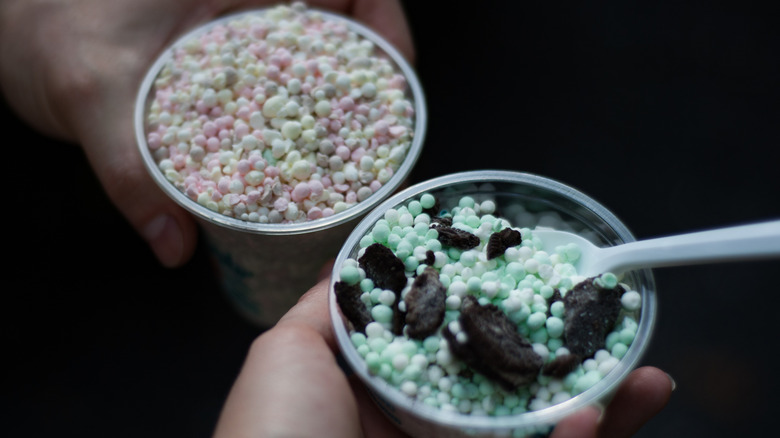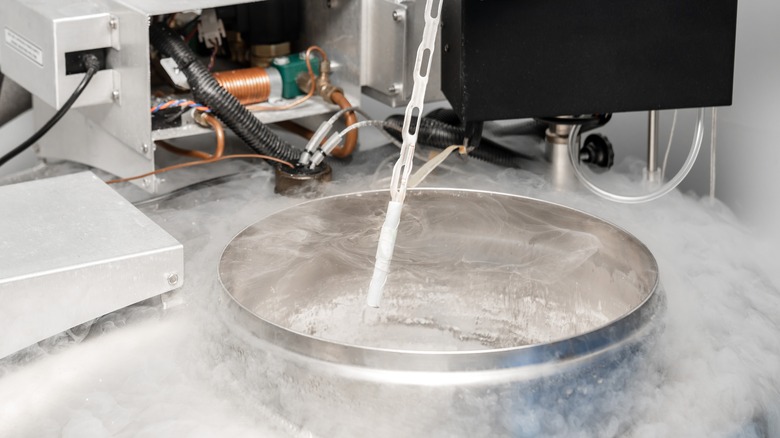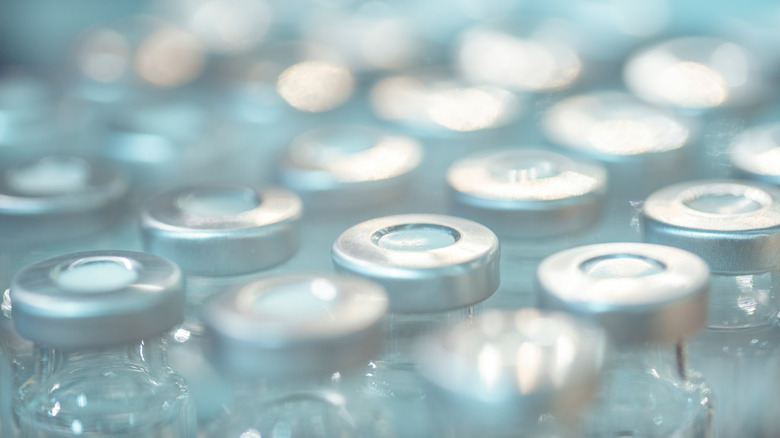The Intense Science That Helped Create Dippin' Dots
Though it can be difficult to look toward the future in these increasingly turbulent times, you need to prepare for the world that's coming around the bend. Nothing is more familiar than eating, but in a few decades, will your brunches and barbecues still be recognizable?
There are some obvious changes already happening in the culinary world. For example, a restaurant in Colorado, Tom's Watch Bar, employed a robot waiter, per WVLT. Additionally, the actual food being doled out by the cyborg servers of the future might also look different. According to the National History Museum, readily accessible and eco-friendly protein sources like jellyfish and insects might be prominent menu fixtures. Recently, construction began on the world's largest cultivated meat plant in Wilson, North Carolina.
There's one dessert brand that has been attempting to drag consumers into the world of tomorrow for decades. Whether or not Dippin' Dots will really be the ice cream of the future is debatable, but it's undeniable that the science behind the creation of these spherical sweets is innovative.
Dippin' Dots futuristic freezing process
According to Adweek, Dippin' Dots are created via a process called cryogenic encapsulation, which was introduced to the realm of frozen desserts by microbiologist Curt Jones in the late 1980s. Essentially, the process involves using pipettes to introduce tiny drops of liquid into liquid nitrogen. In Dippin' Dots, the ice cream mix is the liquid used, and the droplets instantaneously freeze into flavor-filled balls.
In a certain sense, Dippin' Dots can be viewed as the most extreme version of liquid nitrogen ice cream. In an interview with WKBN, Shaun DaVill, owner of the ice cream establishment N2 by DaVill, explained that the instantaneous freezing that is possible with liquid nitrogen results in the best possible frozen dessert. The ice cream base freezes too quickly to establish many ice crystals, and as a result, the product is significantly creamier. Dippin' Dots are frozen at a temperature of negative 320 degrees Fahrenheit, which ensures that the dessert dots lock in their maximum level of creaminess.
Dippin' Dots in the modern age
According to Popular Science, Dippin' Dots are exposed to absolutely frigid temperatures during their creation in liquid nitrogen, but they are stored at the relatively mild, yet still quite chilly temperature of negative 40 degrees Fahrenheit.
The franchise takes painstaking steps to get its ice cream out to consumers while still maintaining its crunchy, creamy consistency. In fact, the business's "cold chain," a manufacturing term that refers to the steps involved in keeping a good at a particular temperature during transportation, is so streamlined that it may have helped to inspire the infrastructure behind the distribution of COVID-19 vaccines. They might not be as important as Pfizer's shots, but in 2012, Washington, D.C.'s A Bar used liquid nitrogen to make alcoholic Dippin' Dots.
The franchise has been through some turbulent times, but it's possible that Dippin' Dots could still go on to become the ice cream of the future. Though Dippin' Dots filed for bankruptcy in 2011, they continued churning out their strange sphere (via Smithsonian Magazine). In 2022, the company that currently owns Dippin' Dots, J&J Snack Foods, recorded multiple quarters of record-breaking profits, per The Motley Fool.


